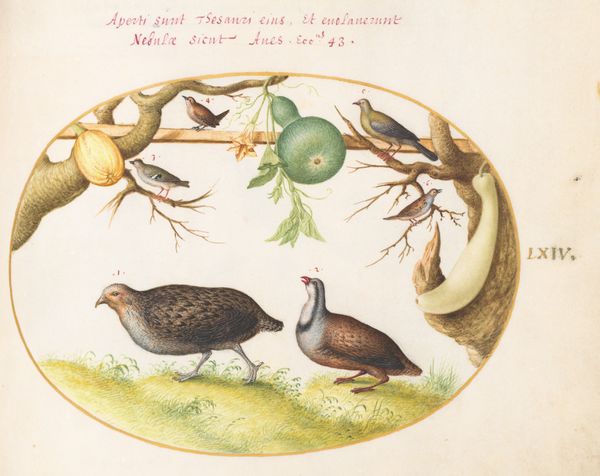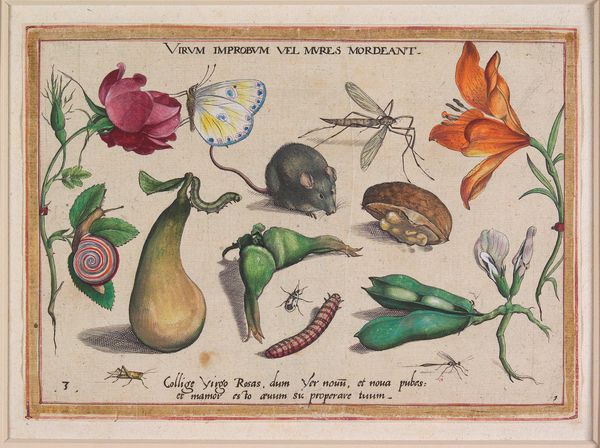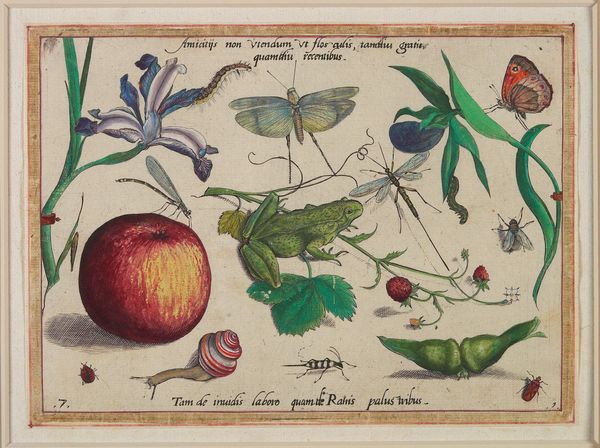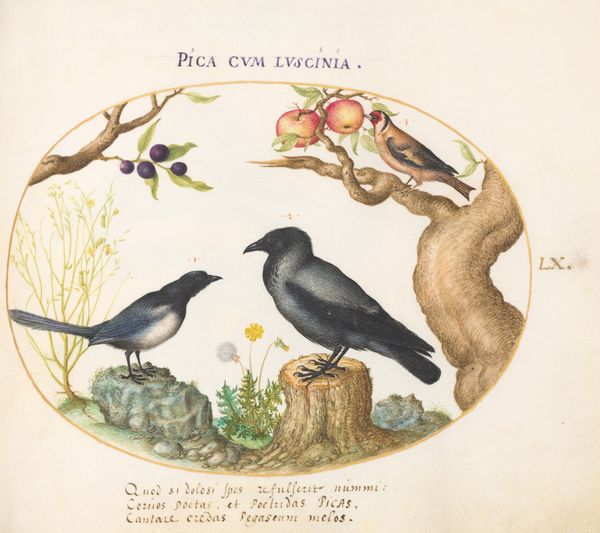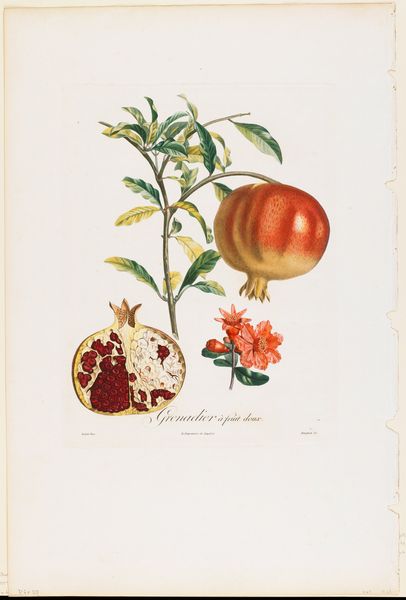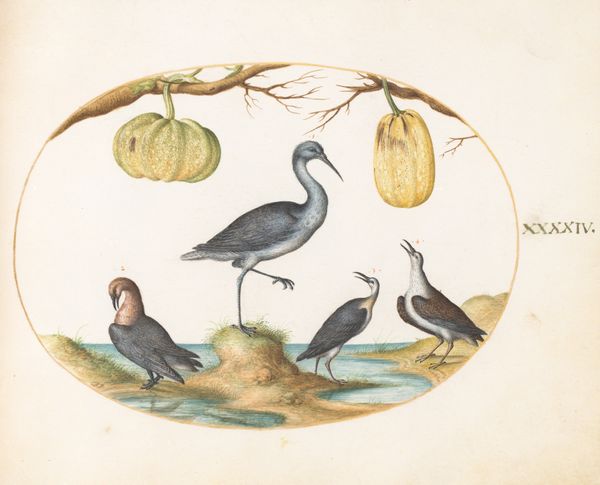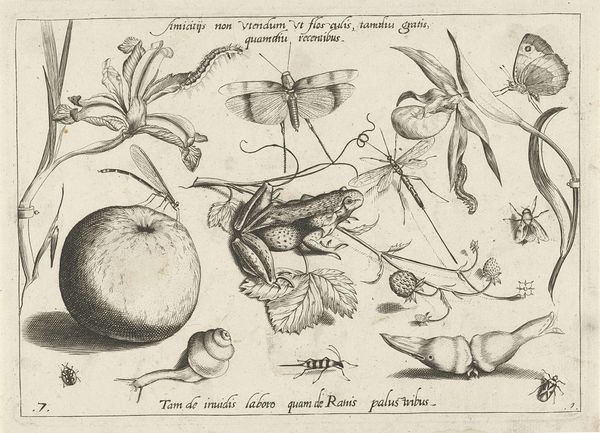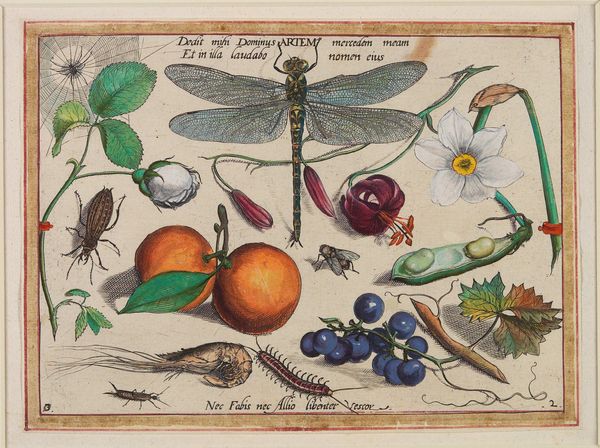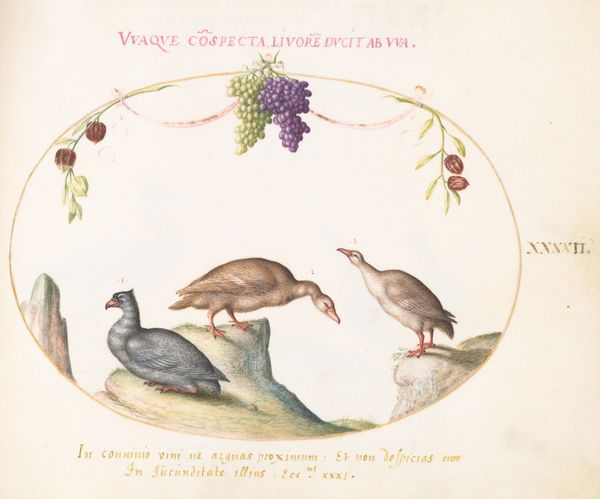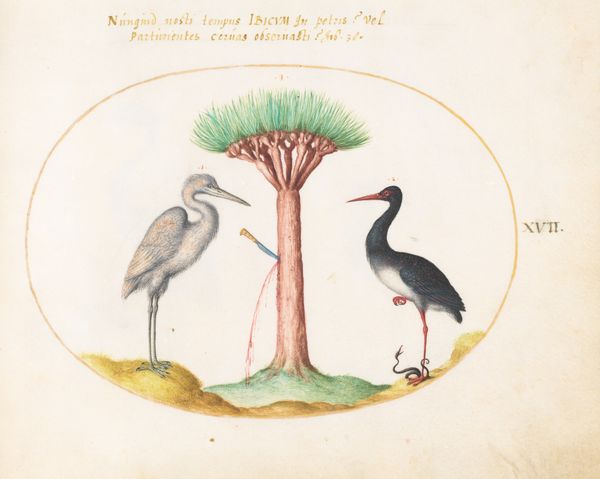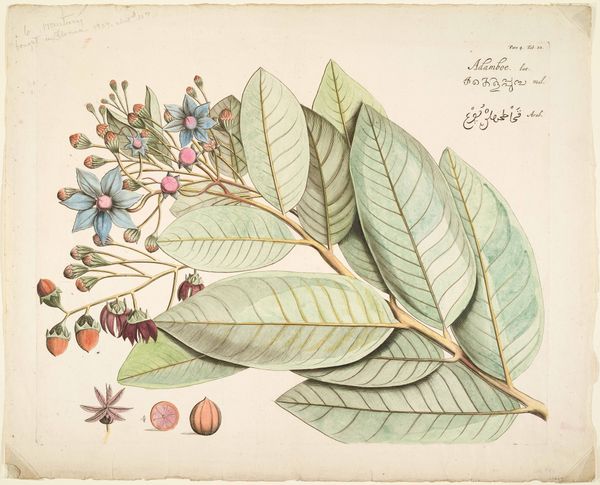
Plate 67: Two Doves beneath a Gourd and Apples c. 1575 - 1580
0:00
0:00
drawing, watercolor
#
drawing
#
water colours
#
mannerism
#
figuration
#
11_renaissance
#
watercolor
#
botanical art
Dimensions: page size (approximate): 14.3 x 18.4 cm (5 5/8 x 7 1/4 in.)
Copyright: National Gallery of Art: CC0 1.0
Curator: This watercolor and ink drawing, made around 1575-1580, is titled "Plate 67: Two Doves beneath a Gourd and Apples," and it’s attributed to Joris Hoefnagel. The artistry is exquisite; what catches your eye first? Editor: The subdued palette and almost scientific precision evoke a sense of delicate melancholy. The colors, while naturalistic, are strangely muted, as if seen through the lens of memory, or loss. Curator: Precisely. Hoefnagel often included symbolic layers. The doves, of course, universally symbolize peace and love. Their placement under the fruit… well, that could suggest both abundance and the potential for temptation or a fall from grace. Editor: And that fall is inevitable, perhaps? Look at the composition. Everything's self-contained within this oval. Even the text acts as a kind of frame. It reminds me of the restrictive social mores and the power dynamics present during the Renaissance. Are these doves truly at peace, or are they caged by expectation? Curator: The Renaissance certainly had a penchant for constraints and visual systems reflecting a hierarchical worldview. But there's also an attempt here, I feel, to reconcile scientific observation with emblematic meaning, striving to imbue the natural world with layers of interpretation accessible through established visual codes. The dove also features prominently in Christianity as the spirit. This is so potent because both interpretations hold value in dialogue with the other. Editor: That's the key, isn't it? That we, even now, inherit these coded symbols— peace, faith— while simultaneously existing in contexts rife with social injustice and the disruption of those same concepts. I keep coming back to the gourd; it hangs there heavy and slightly bruised, not classically beautiful. Perhaps Hoefnagel intentionally includes flawed nature to humanize even symbolic tropes? Curator: Indeed, that blending of idealism with earthy reality makes it an object of continued contemplation, inviting viewers to discern new meanings even now. Editor: I agree. This piece, while seemingly simple, holds up a mirror, asking us what we choose to see, and how we understand the weight of our shared symbolic language.
Comments
No comments
Be the first to comment and join the conversation on the ultimate creative platform.

